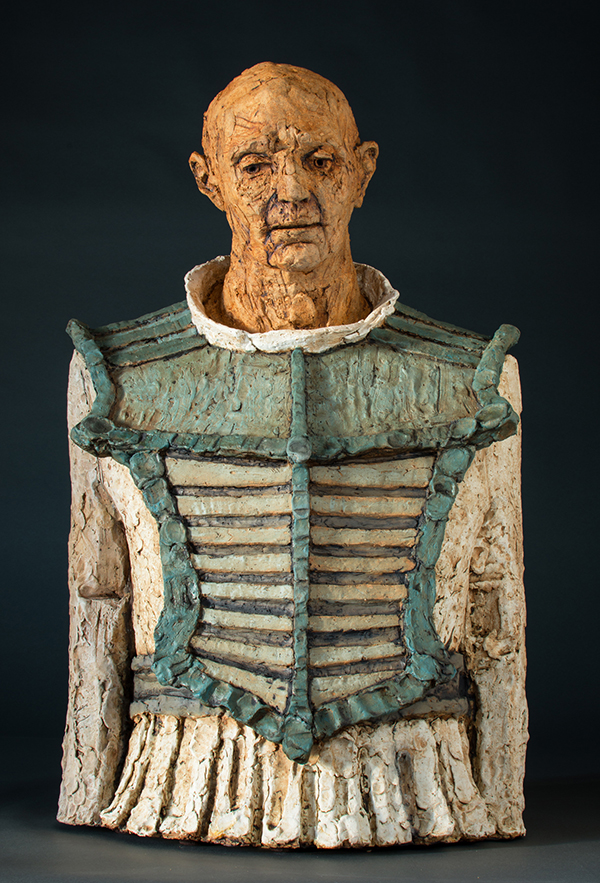
Marlene Miller’s Warrior IV (Supplied Art)
A critical tenet of modernism extoled the full dimensions of ordinary life, the dignity of the commoner and the value of labor. Lionizing the worker, the invisible other of pre-modern history, was an ideological rebuke to the religious, social and economic order of classical art. Replacing a repressive worldview, whose subjects were Tsars, Bishops, and aristocrats, recognized a change in patronage for art and an allegiance to a new reality – one represented by individualism and a pursuit of unvarnished truths. Abandoned was artful illusionism serving the most wealthy. In its place were novel ways of apprehending the world through the psychological and the existential. As modernism and the middle class gained traction, transformational art also gave voice to the underclasses who were linked symbolically with nature. The tradition of commemorative portraiture was turned on its head.
The original Modernists insisted on an art language with a more speculative and critical view of the world. Many new artists and writers who were the progeny of Enlightenment age struggle chose trauma and revolution as a subtext. Expressionism in the visual arts embodied radical change through an intense physical engagement with materials and an exhausting display of self-consciousness. Historically determined subject matter and customs gave way to new constructions of identity and more flexible notions of aesthetics. New art practices linked the present with the primitive, using imagery that was immediate, and in theory timeless. An attention to the eschatological, expressionism’s deep meditation on nature and mortality, became part of a new order and remains an essential subject for artists today.
Marlene Miller has also inherited the formal and conceptual complexities of expressionism. Her troubled ceramic portraits are as daunting as the material she uses to produce them. A vigorous method of building figures – adding and subtracting fistfuls of clay, with an indeterminate path to resolution, is classic expressionism. She engages her work spontaneously, reacting to the material, rather than forcing it to submit. Steadfastly in the present, she makes a formal testament to the rigors of the studio – persuasively improvisational, exhilarating, and finally contemplative. Allowing the elastic qualities of the material to share the stage with her instinctive grasp of the figure asserts that her method is as arduous as it is profoundly intelligent.
Miller’s expressionism is an inquiry into human perseverance. For years the sculptor portrayed busts of men and women whose clay skin revealed the aching accumulations of ordinary life. Even though she makes distinct, nearly natural images, they’re abstractions of human struggle at large. The figures are a tribute to the plodding narratives that surround and connect most of us, ones which ultimately become imprinted on our faces and afflict our bodies. While sometimes appearing heroic, they also reflect those ultimately frozen in apprehension and/or resignation. Their stony expressions conjure a plagued consciousness. They illustrate a resolve to survive at all costs because life offers no plausible alternatives. Fired clay ensures mass and stability after years of deliberative conflict and their pitiable account of living becomes prideful and beautiful. Clay is more than apt for reflecting the aging body, as well as the at-risk practice of autonomous art production – substantial but fragile, and demanding our constant attention.
Miller’s newest pieces signify a change in status – even a mission. They are about vigilance, assuming the demeanor of embattled warrior/combatants. Like her earlier work they approximate the role of ancestors, that may or may not be revered, which maintain a tribal solidarity with the world of adversity they inhabit. Her soldiers, adorned with weathered body armor and helmets, make this meditation on life and death feel more societal and contemporary. Perhaps they reflect our current socio political morass, our anxiety about the planet, or our resentment over unfulfilled potential.
